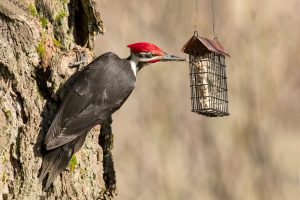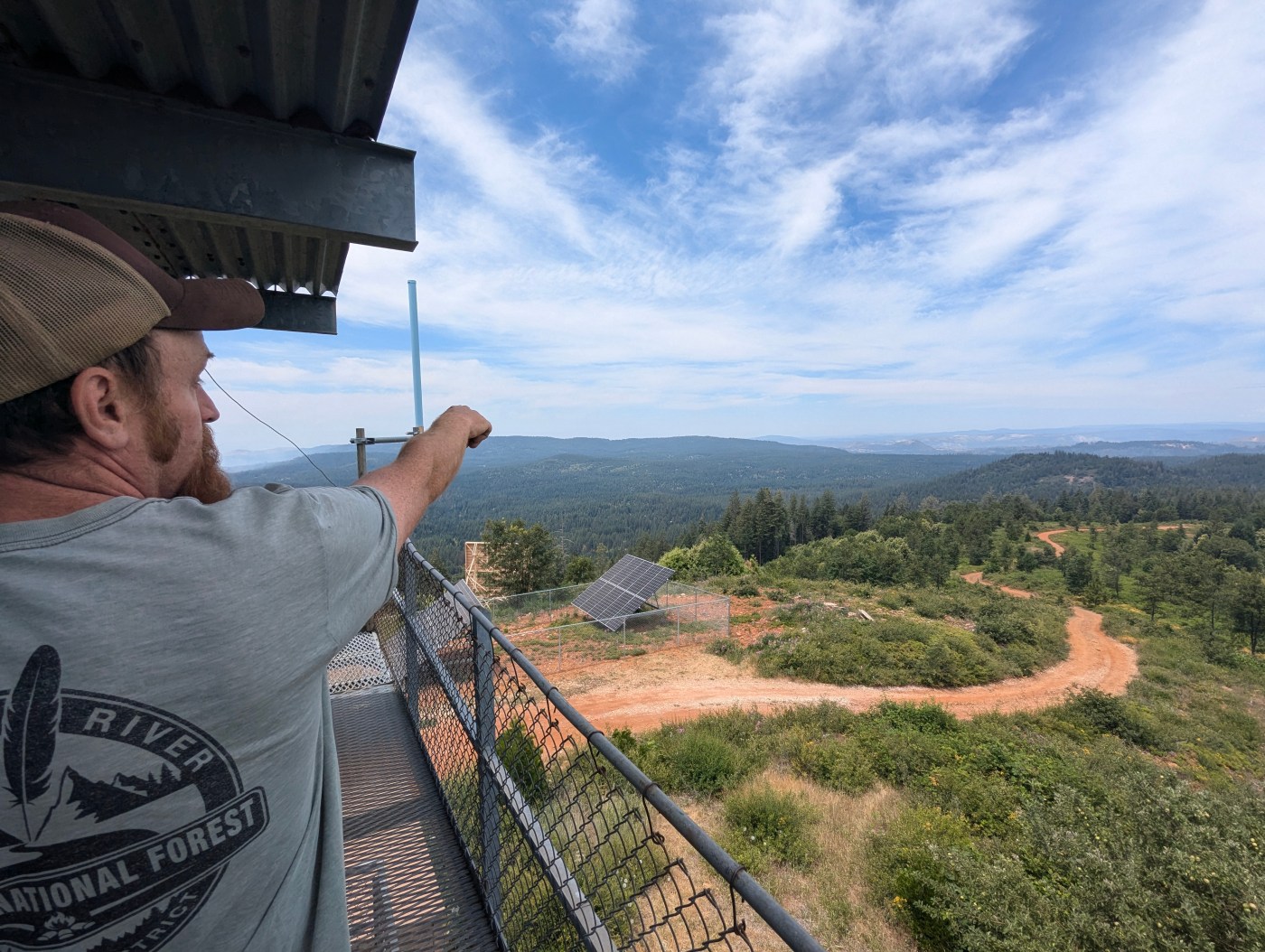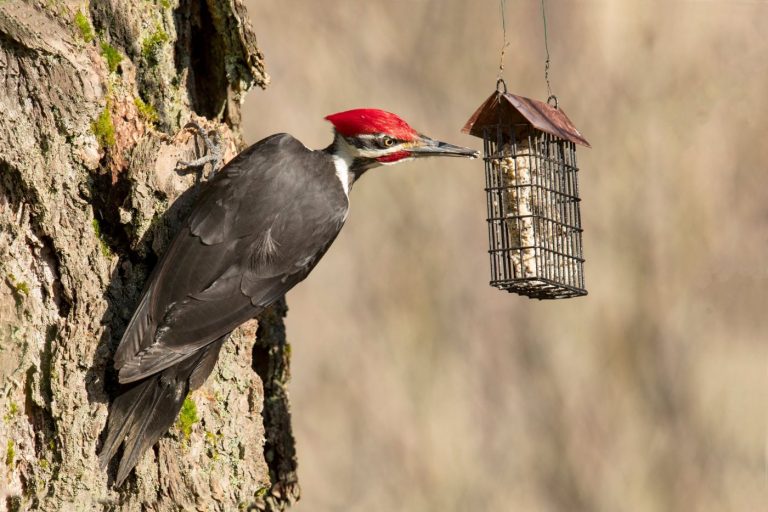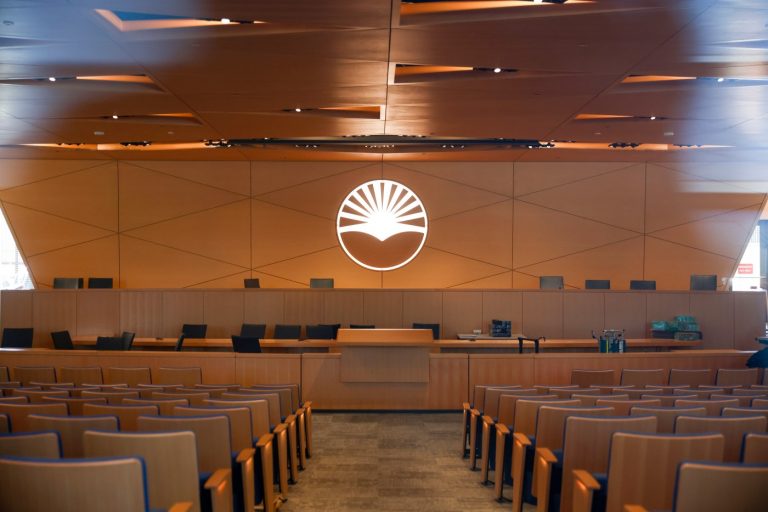CHALLENGE — The North Complex fires destroyed multiple communities as the blaze roared through Northern California in 2020, but had the wind shifted just slightly, it would have destroyed even more.
“(The fire spread) From east of La Porte, all the way down to where it spotted over Lake Oroville,” said Plumas County National Forest Division Chief James Lico. “So 30-plus air miles and hundreds of thousands of acres, and it did that from 10 a.m. when it was spotted and down (past Lake Oroville) probably by 9 p.m. at night. So that is an extreme run in less than 12 hours.”
The people of Challenge, Brownsville and surrounding communities have had fire on their doorstep plenty of times in recent years and in 2022, the funding finally came in for the Plumas National Forest Service to clear fire fuels that have clogged up forest space and significantly increased the risk of wildfires.
James Lico and Eric Murphy show a portion of the Plumas National Forest where prescribed fires and other reduction efforts have cleared the space between the trees on Thursday, June 20, 2024 near Challenge, California. (Jake Hutchison/Enterprise-Record)
Much of the work done in the area is a combination of two projects: the Pike and Challenge Integrated Resource Service Contracts. The Challenge project, which was awarded in 2019, covers 800 acres and so far, 760 acres have been treated.
The Pike project was awarded in 2023 and so far the Forest Service has treated 970 of the total 1,421 acres associated with that contract. JW Bamford Inc. has been the contractor for both projects.
At the Challenge ranger office, Lico and the service’s Timer Management Officer Eric Murphy laid out maps Thursday morning showcasing both the spread of the North Complex fires as well as the current Challenge and Pike fuel reduction projects that are currently underway. Lico noted that just a 5% change in wind direction could have spelled danger for communities along Forbestown Road.
Eric Murphy goes over a map of forest treatment operations in the area of Challenge, California on Thursday, June 20, 2024. (Jake Hutchison/Enterprise-Record)
Because the Forest Service can only operate on federal land, doing work in these areas can often seem like a jigsaw puzzle. Much of the land is private property — owned by logging companies and pine tree plantations or residents of rural communities. Much of the projects have consisted of identifying where the service has jurisdiction but also where work is needed the most. On top of that, there are additional hoops that the Forest Service has to go through just to get the project started such as the National Environmental Policy Act.
“In order for us to do any work, we have to do the NEPA process,” Murphy said. “Most of the time it can take a minimum of a year. You have to tell the public exactly what you’re going to do and then you have all of the specialists survey for everything like wildlife and archaeology but once you get that, you have the permission slip.”
Driving along Forbestown Road, the difference between the recently treated land and the parts that haven’t been treated, whether they are on the docket or just privately owned, are staggering. Portions of the forest that have been logged, masticated and burned were much more open and flat with plenty of space between trees. It’s a far cry from other parts of the forest that were so overgrown that it was nearly impossible to see beyond 10 to 20 feet into the woods.
While there are structures such as homes and businesses throughout the zone in question, geography also plays a part in choosing where to burn.
“It’s a ridgeline,” Lico said. “So ridgelines and roads, those are good places to engage with fire. They’re good places to have evacuation routes, and you get more bang for your buck. We could actually have a fire in here and pick it up pretty quickly if the conditions are right.”
Benefits
One point of contention that has been raised with logging and forest cleanup operations has been the big picture of what exactly a forest is supposed to look like.
Fire historically has been a natural part of nature, often spreading from lightning strikes — such as the case with the North Complex fires. This would clear space for more open woodland areas and meadows, allowing for a fresh start to growth and easier travel for wildlife. Over the years, however, a lack of forest cleanup and fire has allowed for dense undergrowth to take over and spread rapidly — meaning the right wind, heat and humidity levels can make for catastrophic wildfires.
Murphy pointed to the Ponderosa pine tree as evidence of natural fires being part of the historic landscapes.
“It’s adapted to fire,” Murphy said of the pine. “Especially the big ones. They can take some heat at the base. And for the needle cast, it’s just a good way of cleaning up underneath them.”
Plumas National Forest Division Chief James Lico and Timber Management Officer Eric Murphy clear pine needles the old fashioned way from beneath a pine tree on Thursday, June 20, 2024 in Butte County, California. (Jake Hutchison/Enterprise-Record)
Lico said that the work done on the undergrowth will need to be continuous, adding that consistent clearing will be easier in the long run rather than letting the growth get out of control and having to completely revamp parts of the forest.
“When we come back in here, the maintenance will be easier,” Lico said. “As we keep doing this, it will be more cost-effective; it’ll be cheaper, less labor intensive and then your risk is going down too because now you’re going to have lines that are already there.”
Local support
Whether they’ve lost a home to one of the recent wildfires or come too close for comfort, many of the residents in rural communities on the eastern part of Butte County have fire on the mind throughout the summer months.
Promoting defensible space has played a key role in communication with the public from both the Forest Service and Cal Fire throughout the past six years and much of the rural population has taken this to heart. Driving on the backroads, properties frequently had clear space going out 100 feet from homes with many implementing sprinklers not only on the ground, but on rooftops.
John and Kate Lucich have been living up in the hills at their home for 45 years and have seen wildfires as well as changes to the forests surrounding their property. Over the past few months, the couple has done considerable work on their property and praised the work done by the Forest Service.
“You know, it’s been a long time coming,” John Lucich said. “And it’s really needed.”
James Lico and Eric Murphy show a portion of the Plumas National Forest where prescribed fires and other reduction efforts have cleared the space between the trees on Thursday, June 20, 2024 near Challenge, California. (Jake Hutchison/Enterprise-Record)
Murphy, who lives in Brownsville, began a town hall meeting of sorts inviting community members to share their wildfire concerns while adding a layer of local transparency regarding forest operations. John and Kate Lucich said the community has been grateful for that element as well.
Kate Lucich, who grew up in the Challenge area, recalled the meadows that use to be part of the natural landscape that have, over the years, turned to thick undergrowth and dense foliage.
“That’s the way it’s supposed to be,” Kate Lucich said. “Not all of this underbrush and things like that. That way if a fire does come in, yeah it’s going to scorch some trees but it’s not going to rage through and ruin everything and be uncontrollable.”
Staffing
Ongoing projects like those in Challenge and beyond require hefty resources both in terms of finances and boots on the ground.
Plumas National Forest Service Public Affairs Officer Tamara Schmidt said that the jobs are available, but it’s just a matter of connecting with the right people for the jobs. Schmidt didn’t mince words when describing the potential career paths.
“My dad characterizes it as hot, dirty, dangerous work, but it’s meaningful work, and it’s rewarding work for that reason,” Schmidt said. “You get to see places you don’t normally get to see. And getting to work in the wildland, it’s great for people who like camping and being outside and being in the forest.”
Both Lico and Schmidt said part the problem is that a multitude of companies and agencies have similar jobs and therefore there’s a level of competition when it comes to staff retention.
“The challenge we’re having now is that there are other opportunities for those firefighters,” Schmidt said.
Fire crews set up a base of operations near Double Eagle Road outside of Brownsville, California on Thursday, June 20, 2024. (Jake Hutchison/Enterprise-Record)
Schmidt noted that middle leadership has also taken a hit for the service.
“We’ve lost a lot of that leadership so like captains and Hotshot captains and Hotshot superintendents,” Schmidt said. “So it’s about building that workforce and developing them to get that practical skill set and experience to be able to fight fires effectively.”
Funding
Projects such as these don’t come cheap, but recent bouts of funding have helped bring them to fruition.
The Challenge project came out to about $223,735 but was offset by timber sales. Murphy said stewardship help pay for projects when the Forest Service is able to bring in revenue by selling logged wood.
“We would do a good timber sale and then set aside those funds,” Murphy said.
The Plumas National Forest attained its first stewardship in 2015 on a separate project. Additionally, grant funding came in after the Camp Fire and North Complex which helped fund the rest.
For the Pike project, which came out to just north of $5 million, the grant came from Community Protection Funding through the Inflation Reduction Act.













+ There are no comments
Add yours